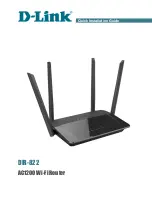
C H A P T E R
3-1
Cisco MGX 8850 (PXM1E/PXM45), Cisco MGX 8950, Cisco MGX 8830, and Cisco MGX 8880 Configuration Guide
Release 5.0.10, OL-3845-01 Rev. B0, August 16, 2004
3
Provisioning PXM1E Communication Links
This chapter describes how to prepare PXM1E lines for physical connectivity to other switches. It
describes how to add ports and connections that support ATM communications over the PXM1E lines to
other devices.
This chapter provides a quickstart procedure for configuring PXM1E cards and lines and describes how
to provision the link and connection types listed in
Note
The procedures in this chapter do not apply to the Cisco MGX 8850 (PXM45) or to the
Cisco MGX 8950. PXM45 cards do not provide ATM lines. Cisco MGX 8850 (PXM45) and
Cisco MGX 8950 switches support ATM communication on the AXSM card.
Table 3-1
PXM1E Link and Connection Types
PXM1E Link or Connection Type Description
PNNI trunks
PNNI trunks connect MGX switches to other MGX switches.
PNNI UNI ports
PNNI user-network interface (UNI) ports connect MGX switches to CPE.
SVCs
1
SVCs are temporary connections that are brought up and torn down upon request from CPE.
SPVCs
2
SPVCs are permanent connections that can be rerouted if a link fails.
PNNI virtual trunks
PNNI virtual trunks are used to traverse public networks. The virtual trunk endpoints are on
separate networks, but the path between the networks is treated like a single link.
Cisco MGX 8850 (PXM1)
feeder PNNI trunks
Feeder trunks link a feeder switch, such as a Cisco MGX 8230 or Cisco MGX 8250 switch,
to a Cisco MGX 8850 Release 5 switch. The feeder switch concatenates relatively low speed
traffic and feeds it over a higher speed interface to the Cisco MGX 8850 switch, which
provide the link to the ATM network core.
BPX PNNI trunks
BPX PNNI trunks provide PNNI links between MGX 8850 switches and BPX switches that
support PNNI. The BPX switch supports PNNI when connected to the Cisco SES PNNI
Controller.
AINI
3
links
AINI links enable connectivity between two independent PNNI networks and block the
PNNI database exchange so the two networks remain independent.
















































